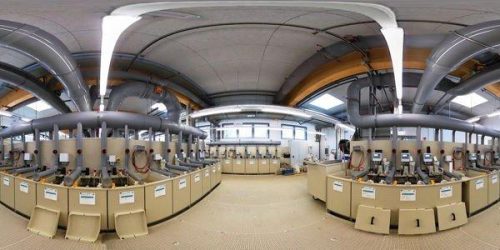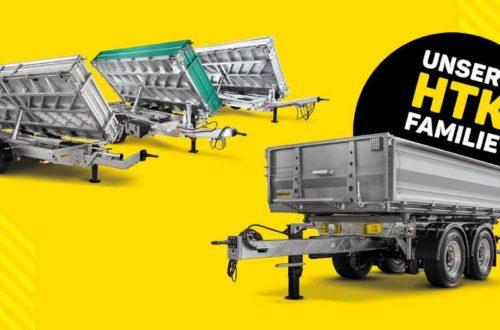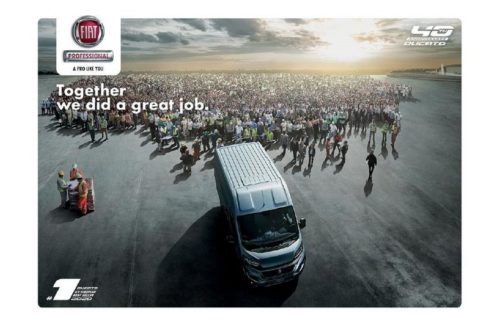Knorr-Bremse: Strong performance in first half of 2020 underscores Knorr-Bremse’s resilience
- Full-year guidance for 2020 confirmed: Revenues of EUR 5,900 to EUR 6,200 million, operating EBITDA margin of 16.5% to 17.5%
- Business performance in the first half of 2020 impacted by the effects of the Covid-19 pandemic
- Revenues fall 15.2% to EUR 3,055.8 million
- Strong aftermarket business with stabilizing effect on earnings performance
- Robust profitability levels: EBITDA margin of 17.5% compared with 18.6% in the prioryear period
- Gross cash funds of EUR 2.3 billion ensure flexibility for operations
Knorr-Bremse AG, the global market leader for braking systems and a leading supplier of other safety-critical rail and commercial vehicle systems, today published its results for the first half of 2020.
Frank Markus Weber, CFO of Knorr-Bremse AG: “The Covid-19 pandemic hit Knorr-Bremse in all markets during the first half of 2020. Our top priority was keeping our employees healthy. We lost no time in swiftly implementing an action program to stabilize income and cash flows in response to the drop in demand; this enabled us to significantly mitigate the effects on our net income in the first half of 2020. Our strong aftermarket business in both divisions helped to keep our profit margins stable. We observed a perceptible recovery in the second quarter, particularly in China, though this will not continue in the same measure. The global situation continues to be subject to high levels of uncertainty.”
Resilient business model thanks to stable aftermarket
The market environment in which the Knorr-Bremse Group operates was dominated by the Covid-19 pandemic in the first six months of the 2020 fiscal year. In the rail vehicle market, China and Europe began to recover from the large-scale restrictions imposed during the initial months of the year towards the end of the first half, while countries such as India and the regions of North and South America continued to feel the full force of the pandemic. The global commercial vehicle market was impacted in the first six months of 2020 by the effects of the Covid-19 pandemic in most parts of the world, shrinking by 16% compared with the prior-year period. Only the Chinese market saw a rapid recovery, even outperforming the first half of 2019 by 21%.
Order intake of the Knorr-Bremse Group in the first half of 2020 consequently fell 23.8% short of the previous year, amounting to EUR 2,727.1 million (H1 2019: EUR 3,581.2 million). At EUR 4,363.3 million, the order book as of June 30, 2020 remained very solid, down just 3.9% on the comparable year figure of EUR 4,542.3 million.
Revenues of the Knorr-Bremse Group declined by 15.2% in the first half of 2020, decreasing to EUR 3,055.8 million (H1 2019: EUR 3,601.5 million). While total revenues in the RVS division were down only by 7.2% year-on-year as a result of falling OE revenues worldwide, revenues in the CVS division dropped by 23.9% due to plummeting commercial vehicle production worldwide and temporarily closures of customers’ manufacturing plants especially in Europe and the USA, particularly in the second quarter. The RVS division’s share of total revenues therefore rose to 57% (H1 2019: 52%).
The share of total revenues of the Group’s aftermarket business climbed noticeably to 37.7% (H1 2019: 31.7%). In absolute terms aftermarket revenues rose by 1.0% reflecting the robust business model of the Knorr-Bremse Group.
Regional contributions to revenue showed the favorable development of the market in the Asia-Pacific region, in which revenues rose by 2.2% in absolute terms. Revenues in the other regions of Europe/Africa and North and South America declined in the first half of 2020. The regional breakdown of revenues as of the end of the first half of 2020 was as follows:
– Europe/Africa 45% (H1 2019: 47%) – Asia-Pacific 34% (H1 2019: 28%) – North America 20% (H1 2019: 23%) – South America 1% (H1 2019: 2%)
These trends show that Knorr-Bremse continues to clearly stand out from other industrial goods markets and from its competitors with its robust business model and its focus on rail and commercial vehicles plus a strong aftermarket business.
Stable EBITDA and EBIT margin thanks to swift action taken early on
Knorr-Bremse immediately took action in response to the global Covid-19 pandemic by implementing a sweeping program of measures designed to stabilize the Group and protect its workforce as effectively as possible amid the challenging environment. In view of the forecast downturn in revenues in the North American and European commercial vehicle market, the CVS division had already initiated strict cost control in 2019 along with a program to improve efficiency. On account of the temporary shuttering of customers’ manufacturing facilities, these measures were stepped up considerably in the first six months of 2020 and systematically implemented. Cost reduction programs were also introduced in the RVS division and in other segments, going a long way toward mitigating the negative impact of the Covid-19 pandemic on the Group’s net income.
EBITDA came to EUR 535.5 million in the first half of 2020 (H1 2019: EUR 669.0 million), a decrease of 20.0% on prior year due mainly to volume factors. At 17.5%, the EBITDA margin showed only a moderate decline (H1 2019: 18.6%). Adjusted for restructuring expenses for the Wülfrath plant (EUR 16.4 million), the operating EBITDA margin for the first half of 2019 came to 19.0%.
EBIT also declined sharply by 25.4% to EUR 397.5 million in the first half of 2020 (H1 2019: EUR 533.2 million). The EBIT margin stood at 13.0%, down just 1.8 percentage points on the figure posted for the prior-year period (14.8%).
A favorable product mix led to a relatively smaller decline in margins compared to revenues, thus underlining the stability of the business modell.
Rail Vehicle Systems (RVS) with a strong order book and solid margin despite Covid-19
The order intake of the RVS division fell by 13.5% to EUR 1,664.3 million across all regions as a result of the Covid-19 pandemic (H1 2019: EUR 1,924.7 million). By contrast, the order book as of June 30, 2020 rose to EUR 3,496.5 million due to the positive order situation in the first half of 2019 in particular (H1 2019: EUR 3,261.1 million).
Revenues of the RVS division declined by 7.2% to EUR 1,740.8 million in the first half of 2020 (H1 2019: EUR 1,876.0 million). The RailServices business grew based on the strength of the European and North American markets. However, OE revenues fell, primarily in Europe and there mainly in the light rail vehicles and regional and commuter trains segments as well as in the business for high-speed trains. In addition, North America saw revenues decline, mainly in the freight business, as did Asia in the locomotive business and the business for high-speed trains. In the Asian market this was compensated to some extent by robust performance in the business for metro cars.
At EUR 390.2 million, EBITDA was down by a comparatively moderate 6.4% on the prioryear figure (H1 2019: EUR 417.0 million) due to volume factors. This gave rise to a stable trend in the EBITDA margin, which came to 22.4% for the first half year (H1 2019: 22.2%). The division benefited from the gratifying development of the high-margin aftermarket business, whose contribution to earnings helped the profit margin to stabilize at a high level. In addition, the cost reduction program implemented straight away to mitigate the effects of the Covid-19 pandemic had a positive effect on net income.
Commercial Vehicle Systems (CVS) with a robust aftermarket business
The Commercial Vehicle Systems division recorded a sharp fall in its order intake of 36.1% to EUR 1,060.6 million in the first half of 2020 (previous year: EUR 1,658.5 million). This was attributable to temporary closures at our customers’ manufacturing facilities because of the Covid-19 crisis, mainly in the second quarter of 2020. The significant decrease in the order intake was also reflected in the order book, which dwindled by 32.1% to EUR 880.1 million as of June 30, 2020 (previous year: EUR 1,295.6 million).
All markets saw commercial vehicle production drop in the first half of 2020 as expected, exacerbated by the effects of the Covid-19 pandemic. Compared with the first half of 2019, the global truck production rate in the first half 2020 was down 16%, with the production rate in Western Europe 42% lower and in North America as much as 49% lower. As a result, revenues of the CVS division declined appreciably by 23.9% to EUR 1,314.7 million in the first half of 2020 (H1 2019: EUR 1,726.7 million). OE customers accounted for 71% of the division’s total revenues, a year-on-year decrease of 7 percentage points (H1 2019: 78%). In contrast, the aftermarket share of total revenues rose to 29% (previous year: 22%) and showed itself to be robust in absolute terms as well, just shy of the prior-year level.
EBITDA fell by 40.1% to EUR 158.2 million in the first six months of 2020 (H1 2019: EUR 264.2 million). At 12.0%, the EBITDA margin was 3.3 percentage points lower year-onyear (H1 2019: 15.3%). Adjusted for the restructuring expenses for the Wülfrath plant in the amount of EUR 16.4 million, the operating EBITDA margin came to 16.3%.
Higher capital expenditure on research and development and on production and automation projects
Knorr-Bremse invested 6.4% of its revenues in research and development in the first half of 2020. Of this figure, 5.7% of the corresponding revenues was attributable to the RVS division and 7.3% to the CVS division.
Knorr-Bremse continued its forward-looking capital expenditure policy in the first half of 2020 despite setting new priorities in connection with the Covid-19 pandemic, and in doing so underscored the Group’s long-term growth and innovation priorities. Capital expenditure on property, plant and equipment and intangible assets came to EUR 147.9 million as of June 30, 2020 (H1 2019: EUR 123.4 million; adjusted by EUR 10.3 million for the Munich headquarters “north sector”). In addition to ongoing construction projects to expand production capacity at the North American sites in Huntington and Bowling Green, major capital expenditure on property, plant and equipment especially went toward strategic investments for the steering systems business, replacement and expansion projects for production facilities and their automation, as well as supplier tools and IT projects.
The Knorr-Bremse Group had a total of 28,941 employees as of June 30, 2020, 2.9% fewer than in the prior-year period (H1 2019: 29,812). In some countries, Knorr-Bremse made use of short-time working arrangements to bring employee capacity into line with the change in capacity utilization and avoid making highly qualified employees redundant. The acquisition of R.H. Sheppard in the commercial vehicle business added 792 employees in the first half of 2020. On the other hand, the headcount no longer included the 529 employees from the Powertech Group in the rail vehicle business who were still on the books in the first half of 2019. The Powertech Group has since been sold.
Cash funds of EUR 2.3 billion ensure flexibility for operations
Back in March, Knorr-Bremse had announced its intention to draw on additional lines of credit in the amount of EUR 750 million. This will ensure flexibility for operations, even if the Covid- 19 pandemic escalates further and the economic slowdown accelerates. With gross cash funds totaling EUR 2.3 billion as of June 30, 2020, Knorr-Bremse has sufficient flexibility to cover its liquidity requirements.
Guidance for full-year 2020 confirmed
Based on the first half of 2020 and subject to further lockdowns due to the Covid-19 pandemic with its impact on business performance up until the end of the year, the Company expects full-year 2020 revenues of EUR 5,900 to EUR 6,200 million (reported 2019: EUR 6,937 million) and an operating margin (EBITDA) of 16.5% to 17.5% (reported 2019: 18.8%). Our outlook assumes that global economic growth will be no weaker than currently expected and that the political environment and exchange rates remain stable.
The full half-year report for 2020 is available at www.knorr-bremse.com.
DISCLAIMER
This publication has been independently prepared by Knorr-Bremse AG (“Knorr-Bremse”). It may contain forward-looking statements which address key issues such as strategy, future financial results, events, competitive positions and product developments. It may contain forward-looking statements which address key issues such as strategy, future financial results, events, competitive positions and product developments. Such forward-looking statements are subject to a number of risks, uncertainties and other factors, including, but not limited to, those described in Knorr-Bremse’s disclosures. Should one or more of these risks, uncertainties or other factors materialize, or should underlying expectations not occur or shall assumptions prove incorrect, the actual results, performances or achievements of Knorr-Bremse may vary materially from those described in the relevant forward-looking statements. Such forward-looking statements may be identified by words such as “expect,” “want,” “anticipate,” “intend,” “plan,” “believe,” “seek,” “estimate,” “will,” “project” or words of similar meaning. Knorr-Bremse does not intend, nor does it assume any obligation, to update or revise its forward-looking statements regularly in light of developments which differ from those anticipated. This publication may include – in the applicable financial reporting framework not clearly defined – supplemental financial measures that are or may be alternative performance measures (non-GAAPmeasures). For the assessment of the net assets, financial position and results of operations of Knorr- Bremse, these supplementary financial figures should not be used in isolation or as alternatives to the financial figures presented in the consolidated financial statements and determined in accordance with the relevant financial reporting framework. The calculation by other companies that report or describe similarly titled alternative performance measures may vary despite the use of the same or similar terminology.
Knorr-Bremse (ISIN: DE000KBX1006, ticker symbol: KBX) is the global market leader for braking systems and a leading supplier of other safety-critical rail and commercial vehicle systems. Knorr- Bremse’s products make a decisive contribution to greater safety and energy efficiency on rail tracks and roads around the world. About 28,500 employees at over 100 sites in more than 30 countries use their competence and motivation to satisfy customers worldwide with products and services. In 2019, Knorr-Bremse’s two divisions together generated revenues of EUR 6.9 billion. For more than 115 years the company has been the industry innovator, driving innovation in mobility and transportation technologies with an edge in connected system solutions. Knorr-Bremse is one of Germany’s most successful industrial companies and profits from the key global megatrends: Urbanization, sustainability, digitalization and automated driving.
Knorr-Bremse AG
Moosacher Straße 80
80809 München
Telefon: +49 (89) 3547-0
Telefax: +49 (89) 3547-2767
http://www.knorr-bremse.de
Head of Corporate Communications
Telefon: +49 (89) 3547-1402
E-Mail: alexandra.bufe@knorr-bremse.com
![]()



